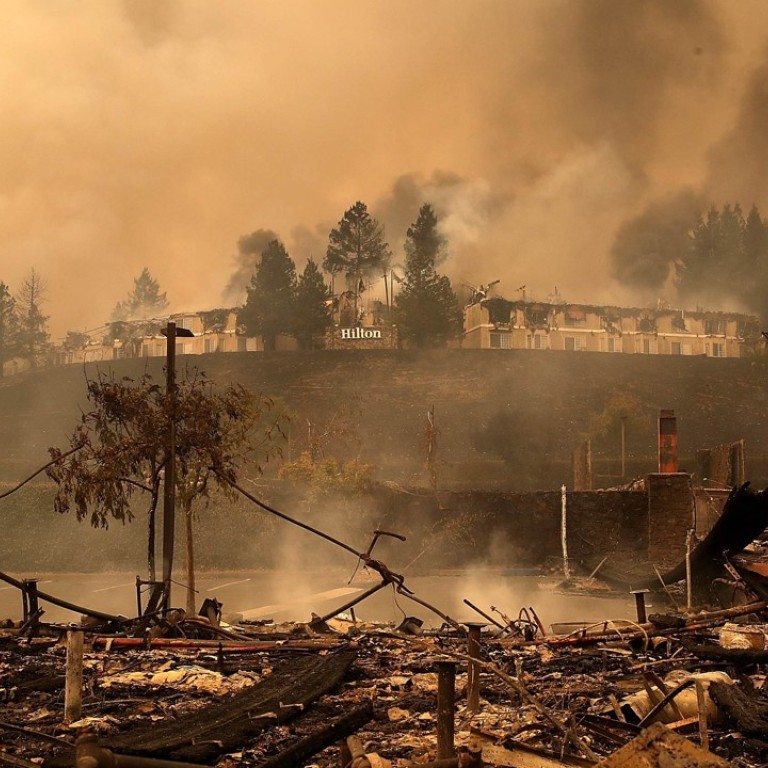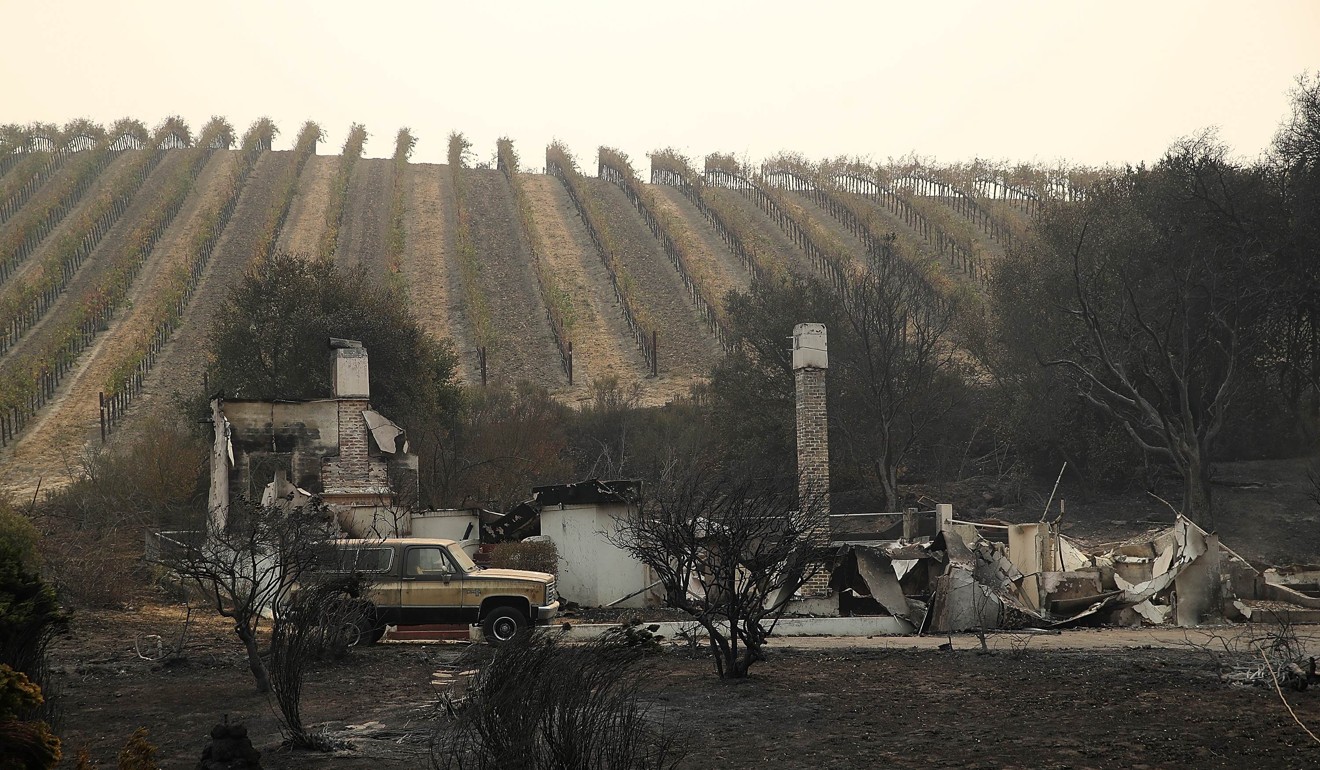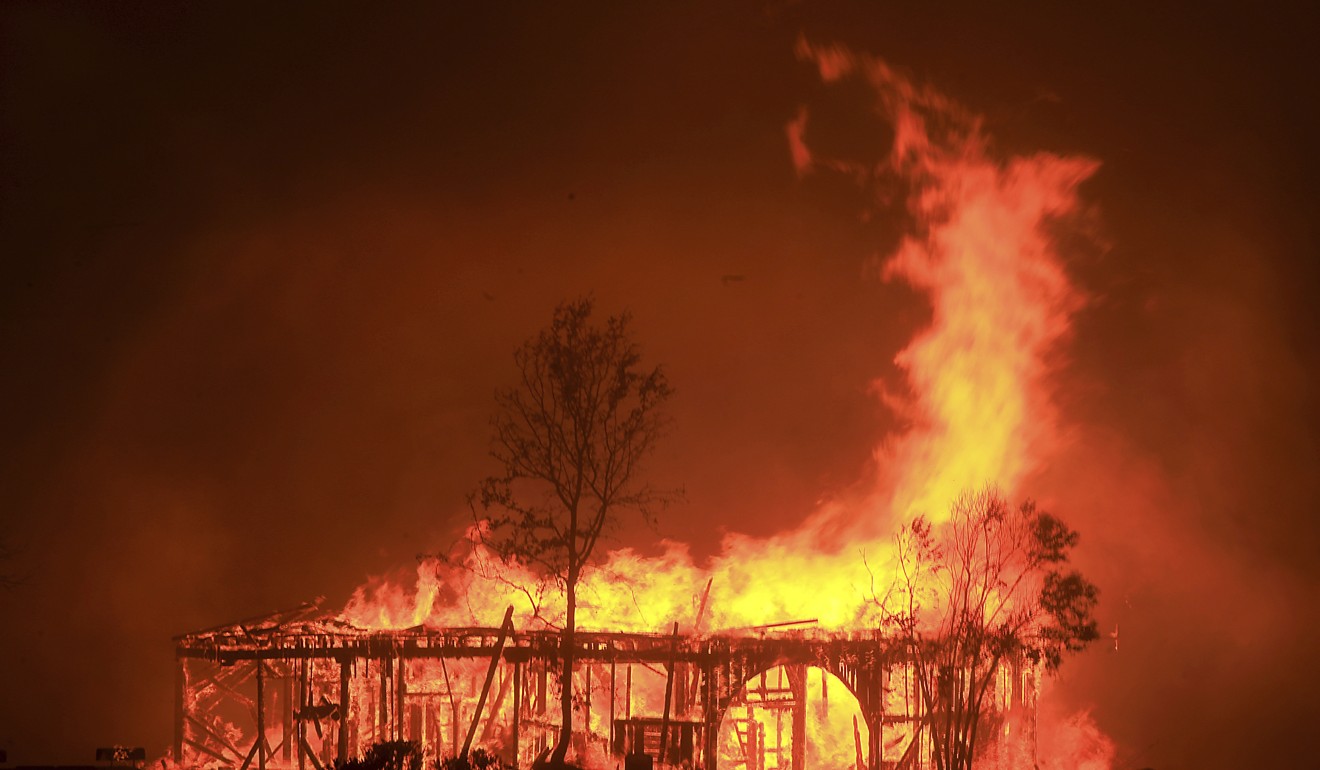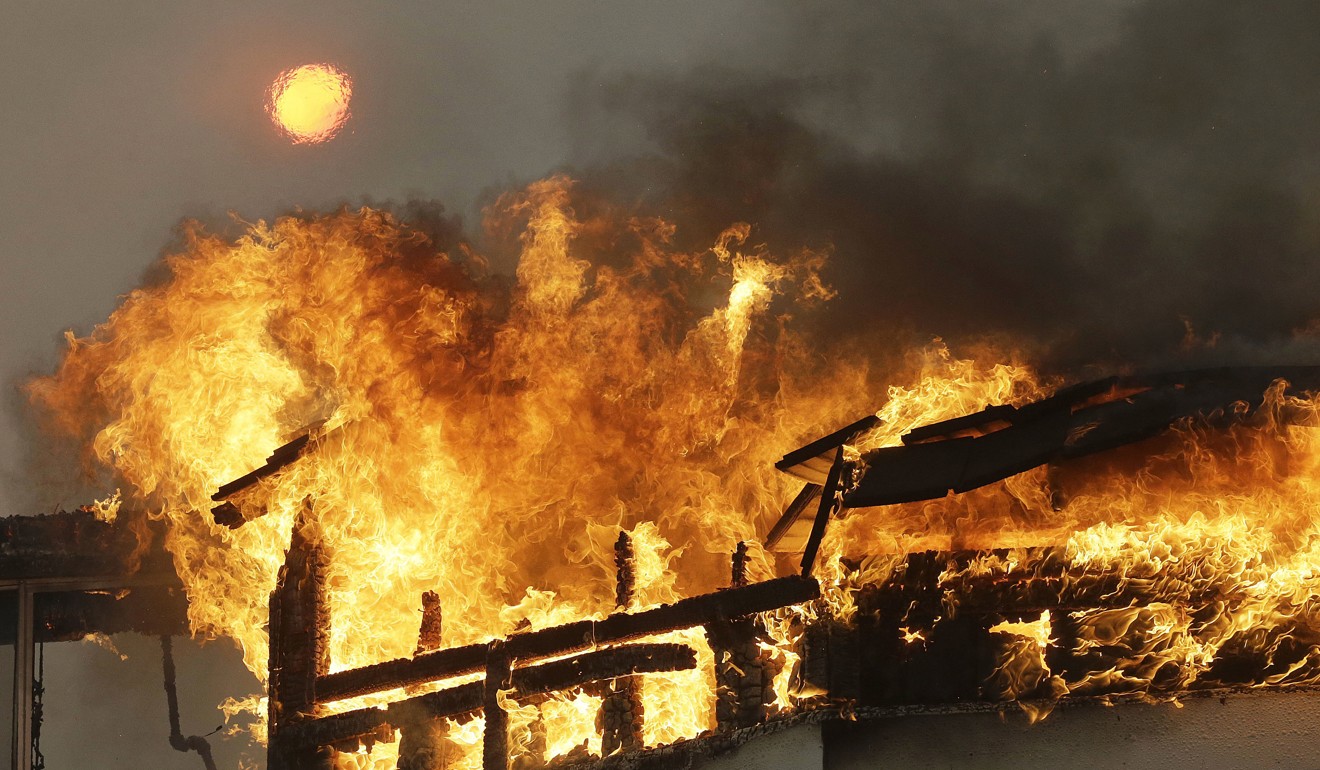
Deadly California wildfires could hit Hong Kong wine supply, says importer shocked by ‘awful tragedy’
Flames destroy wineries in Sonoma, Napa and Mendocino counties, and with wildfires still raging, seller of Californian wine in Hong Kong warns imports could drop; industry figures on the ground hopeful supply won’t take a big hit
“It’s awful. It’s an absolute tragedy,” said Fifi Kirstein, managing partner of Golden Gate Wine in the city’s Sheung Wan neighbourhood. Kirstein imports and sells 500 to 800 cases of American wine each month, and 40 per cent to 50 per cent of that is from Northern California. Her top brands include Far Niente, Schramsberg, Cline, Coppola, and Freeman, which sell for between US$20 and US$400 a bottle.
“Looking at the fire maps, you’re talking about Calistoga, you’re talking about premium wine areas,” Kirstein says. “So those would also be less likely to have stockpiles … You’re not talking about mass production areas where you can kind of source from outside to make as much as you possibly desire.”
If the fires interrupt supply, Kirstein could run short of stock. That’s partly because Hong Kong’s high property prices make stockpiling wine more expensive than importing it. She normally keeps about 2,000 cases of US wine on hand. Under normal circumstances, that lasts three to five months.
With firefighters still battling the blazes, the supply picture remained unclear on Tuesday.
Fifteen fires began late on Sunday. Seasonal winds of up to 120km/h per hour drove the fires in Sonoma, Napa and Mendocino counties. Authorities said late on Monday the blazes were “zero to one per cent contained” and they continued to spread. Santa Rosa, home to many industrial wineries, was particularly hard hit.

Ten people were confirmed dead, with 150 injured and 100 missing. More than 20,000 people were displaced in evacuations, which continue. At least 1,500 homes and businesses burned to the ground.
Among them were landmark destinations for wine tourists. In Santa Rosa, a Sonoma County city of 175,000, the buildings destroyed included the famed Fountaingrove Inn and the picturesque, 16-sided Fountaingrove Round Barn, which dates back to 1899. The Hilton Sonoma Wine Country hotel and Willi’s Wine Bar were also destroyed.

In Sonoma, it was the 100-year-old Stornetta Dairy. In Yountville, Napa county, the French Laundry, a restaurant with three Michelin stars, shut its doors due to power outages caused by the fires.
Several wineries also burned to the ground. Santa Rosa’s Paradise Ridge Winery, home to a world-famous sculpture garden, was lost, as was Nicholson Ranch, near the city of Sonoma.

Three regions in Napa County were hit particularly hard. In the Atlas Peak region, Odette Estate Winery was destroyed. Near Soda Canyon Road, one of the county’s oldest wineries, family-owned White Rock Vineyards, burned to the ground. And in the Stag Leap region, famed for its cabernet sauvignon, Signorello Estate was destroyed.
Further north in Mendocino’s Redwood Valley, noted biodynamic winery Frey Vineyards was lost.
Some industry professionals are optimistic that the fires won’t dent supplies too badly.
My greatest concern would really be supply for obvious reasons … And also destruction of historic vineyards. Sonoma has some beautiful old vines
“The majority of grapes in Sonoma have been harvested already and will be fine,” says Geoff Kruth, president of GuildSomm, a learning resource for wine-industry professionals. “Some late pickers could be affected, but most of the harvest is done.”
Indeed, Sonoma County Winegrowers president Karissa Kruse told the Mercury News that 90 per cent of Sonoma county’s grapes had already been harvested when the fires started, though other grapes were due to be picked in the next 10 days.
Many of those grapes may have burned, though, as Kruth pointed out, “vineyards don’t tend to spread fire well”.
Kirstein doesn’t buy wine from any of the destroyed wineries. But she does buy direct from other Northern California wineries, rather than from warehouses. She’s concerned that the still uncontrolled blazes will burn the barrels at wineries she does buy from.
“My greatest concern would really be supply for obvious reasons, but it’s really too soon to tell,” Kirstein says. “And also destruction of historic vineyards. Sonoma has some beautiful old vines that it would be really sad to lose.”

Then there’s the risk of “smoke taint”. With so much smoke and soot in the air, grapes that are at various stages of the winemaking process could acquire a sooty flavour. Even stored wine could be at risk of smoke taint. Kruth largely dismissed that possibility, again with the caveat that the scope of the fire damage remains to be seen.
Kirstein agreed, saying: “Smoke taint is probably lowest on my list of concerns because there are solutions. You can blend it out by mixing between different wines.”
She also has some advice for Hong Kong wine buyers who may be worried about the impact of the fires.
“I would not jump to any conclusion until there is factual information,” she said, and noted “they are pretty talented people” in Northern California’s wine industry.
“Yes, it might be smaller production, and smaller allocations, but we’ll just work around it and make sure everyone gets the most that’s possible, the best that’s possible,” Kirstein said.
